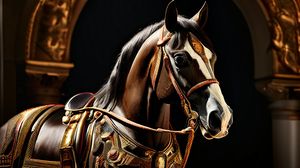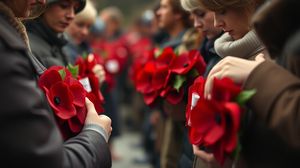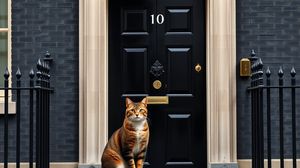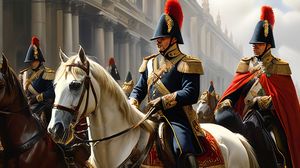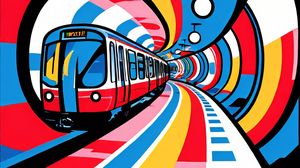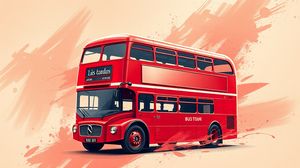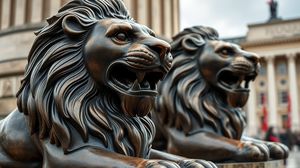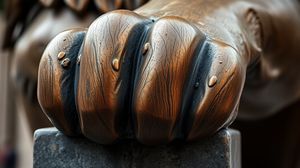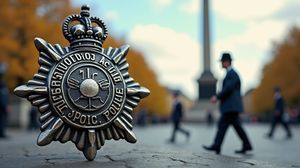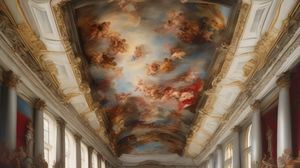
Banqueting House, Whitehall, is an iconic example of neoclassical architecture in London. Designed by architect Inigo Jones, it was completed in 1622 and is the only surviving component of the former Whitehall Palace. The building served as a venue for grand state occasions and banquets during the reigns of James I and Charles I.
Perhaps the most striking feature of Banqueting House is its magnificent ceiling painted by Sir Peter Paul Rubens. Installed in 1636, the ceiling is composed of nine canvases depicting the allegory of the Union of the Crowns, the Apotheosis of James I, and the peaceful reign of his son, Charles I. It is one of the few masterpieces by Rubens that remains in its original location.
An intriguing historical point about Banqueting House is its connection to an important and tragic moment in British history. On January 30, 1649, King Charles I was executed outside on a scaffold built specifically for the occasion. It is said that he walked through the Banqueting House under the Rubens ceiling to meet his fate, adding a layer of poignancy to the building's history.
The architectural design of Banqueting House was revolutionary for its time. Inigo Jones introduced the principles of classical architecture to England, drawing inspiration from the Italian Renaissance. Its design marked a dramatic departure from the Elizabethan style, influencing future generations of British architecture.
Banqueting House has been utilized for various functions over the centuries. It was a chapel and a museum before it became a part of Historic Royal Palaces, an independent charity responsible for maintaining some of the UK's unoccupied royal palaces.
The spectacular yet eerie legacy of Banqueting House and its pivotal role in the English Civil War is felt by visitors even today. As the only surviving portion of a massive palace complex, it offers a rare glimpse into the opulence and complex history of the Stuart monarchy.

Making the Most of Your Visit:
If you're visiting Banqueting House, it's vital to take some time to admire the Rubens ceiling. The vast canvas is truly breathtaking in person, so try to make it the center of your visit. If you can, lie down on one of the beanbags provided to get the best view.
Remember, this place is more than just pretty paintings. As you take in the grandeur of the Main Hall, don't forget about its historical significance as the site of Charles I's execution. Imagine the scene as you look out of the windows onto Whitehall.
Consider renting one of the audio guides. They provide a lot of context and interesting tales about the Banqueting House's history and architecture that are easy to miss if you're just walking around by yourself.
If you're into photography, take advantage of the unique photo opportunities here. The light and shadow inside the Banqueting House can create stunning effects, especially in the afternoon, lending your shots a dramatic flair.
It's usually pretty peaceful compared to London's larger tourist attractions, so take your time to soak it all in without rushing. It's a chance to experience a bit of tranquility in the city center.

Visiting Times & Costs:
Banqueting House, Whitehall is currently open to the public, but opening times can vary throughout the year. It is advisable to check in advance as the building can occasionally close for private events or maintenance.
As of the latest information, the typical opening hours are from 10:00 AM to 5:00 PM, with the last admission usually being 30 minutes before closing. However, these times may be subject to change, so it's best to verify closer to your visit.
The standard ticket prices are as follows:
- Adult: £6.00
- Child (under 5): Free
- Concession (students, seniors, etc.): £5.00
- Family (1 adult and up to 3 children): £10.00
- Family (2 adults and up to 3 children): £15.00
Accessibility is a priority at Banqueting House. There are lifts available for wheelchair users, and accessible toilets are located on-site. However, it is worth noting that the main entrance has a few steps, and assistance may be required for entry.
Due to its central location and historical significance, Banqueting House can occasionally be busy, especially during the tourist season, but it remains a relatively serene spot compared to larger attractions.

Address & Map:

Nearby:
